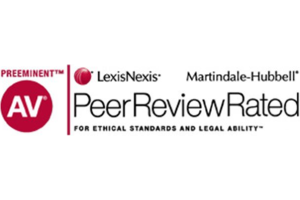- Free Consultation: (844) 268-7775 Tap Here to Call Us
Does the Police Report Definitively Determine Who is the At-Fault Driver in an Indiana Auto Accident Case or Indiana Truck Accident Case?
Before we meet with a prospective client about their potential car accident injury case or truck accident injury case, we will have already obtained and reviewed the crash report. We will then go through the crash report with them and identify whether the officer determined anyone was the primary cause of the accident and whether there were any contributing factors. Sometimes the investigating officer has made a definitive decision as to the primary cause. Other times we find the officer was unable to determine what was the primary cause of the accident and has provided an “either or” type answer. Ultimately, we are asked what will the insurance company or trucking company do with the officer’s findings? Unfortunately, like many answers in the law, it depends.
An Indiana Officer’s Standard Crash Report must be completed by the investigating police officer when a car accident causes an injury or death or property damage greater than $1000. The most significant portions of the crash report for personal injury cases are the check-the-box section on contributing circumstances and the section where the officer is to provide a narrative/diagram of the incident.
The check-the-box section on contributing circumstances includes a variety of options for the investigating officer to list for the “Primary Cause” and for the other vehicle(s) involved. Options for the officer include such human factors as alcoholic beverages, illegal drugs, prescription drugs, unsafe speed, failure to yield, disregarding a signal, improper turning, using a cell phone, passenger distraction and pedestrian’s actions. Options also include mechanical factors such as brake failure, accelerator failure, tire failure, and tow hitch failure. Finally, the options include environmental factors such as glare, roadway surface, severe crosswinds, roadway construction, an animal or object in the roadway, utility work, or the view was obstructed. The primary cause is the officer’s strongest suspicion as to what caused the accident. Contributing factors are other issues that may have caused or contributed to the accident.
The narrative/diagram requirement of the report gives the officer a chance to explain the matter in more detail. Here the officer often lists the basis for the check-box conclusions, such as witness observations, skid-marks, gouge marks, damage, or other available information, assuming the officer was not an eyewitness, which does happen on occasion.
Although a police report stating that the other driver was the “primary cause” can go a long way to persuading a liability insurer or trucking company that their insured or driver will ultimately be found to be at fault in a legal case, it does not end the question as an evidentiary matter in a legal case. When it comes to an actual fault determination in a legal case, there is no check-the-box approach. The Indiana Code defines fault much more generally as follows:
IC 34-6-2-45 “Fault”
(a) “Fault”, for purposes of IC 34-20, means an act or omission that is negligent, willful, wanton, reckless, or intentional toward the person or property of others. The term includes the following: (1) Unreasonable failure to avoid an injury or to mitigate damages. (2) A finding under IC 34-20-2 (or IC 33-1-1.5-3 before its repeal) that a person is subject to liability for physical harm caused by a product, notwithstanding the lack of negligence or willful, wanton, or reckless conduct by the manufacturer or seller. (b) “Fault”, for purposes of IC 34-51-2, includes any act or omission that is negligent, willful, wanton, reckless, or intentional toward the person or property of others. The term also includes unreasonable assumption of risk not constituting an enforceable express consent, incurred risk, and unreasonable failure to avoid an injury or to mitigate damages.
Comparing the detailed options available to the police officer investigating a motor vehicle injury and the more general notions of legal “fault” leads many to wonder whether the officer’s more detailed findings in the report can simply be placed before the court or jury in the form of an exhibit. Indiana law, embodied by the hearsay doctrine, generally prohibits admission of the police report itself in most cases for the reason that, unless the officer was a witness to the accident, the officer’s conclusions were most likely based upon the statements of others.
Hearsay is an evidentiary doctrine that provides that a statement not made by the person testifying which is offered for the truth of the statement is not admissible unless it falls under an exception to the hearsay rule. One such exception is for public records. However, even though a police report is a public record, the exception itself provides that “investigative reports by police and other law enforcement personnel, except when offered by an accused in a criminal case” are not excepted from the hearsay rule. Some offering police reports into evidence in a case have argued that the report is yet admissible for the reason it involves a “routine, ministerial, objective nonevaluative matter.” The Indiana Court of Appeals rejected this argument in the 2014 case of Averitt Express, Inc. v. State of Indiana. The Averitt Court also rejected the argument that the officer’s affidavit opinion about the cause of the accident was admissible as an opinion of a skilled witness for the reason that a skilled witness opinion may not be based upon “information received from others or a hypothetical question.” As such, and as explained more thoroughly by the concurring opinion in Averitt, when an officer develops an opinion only from a post-accident investigation into the statements of others and is not otherwise qualified as an expert witness, the officer’s opinion as to causation will not be admissible.
In conclusion, a police report may be a likely indicator of how a case may play out in court. However, if a dispute arises over the conclusions in the report itself, there will be plenty of legal legwork to perform to prove up the case.














